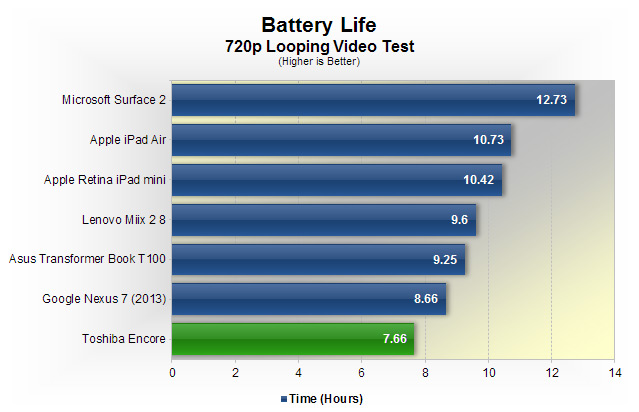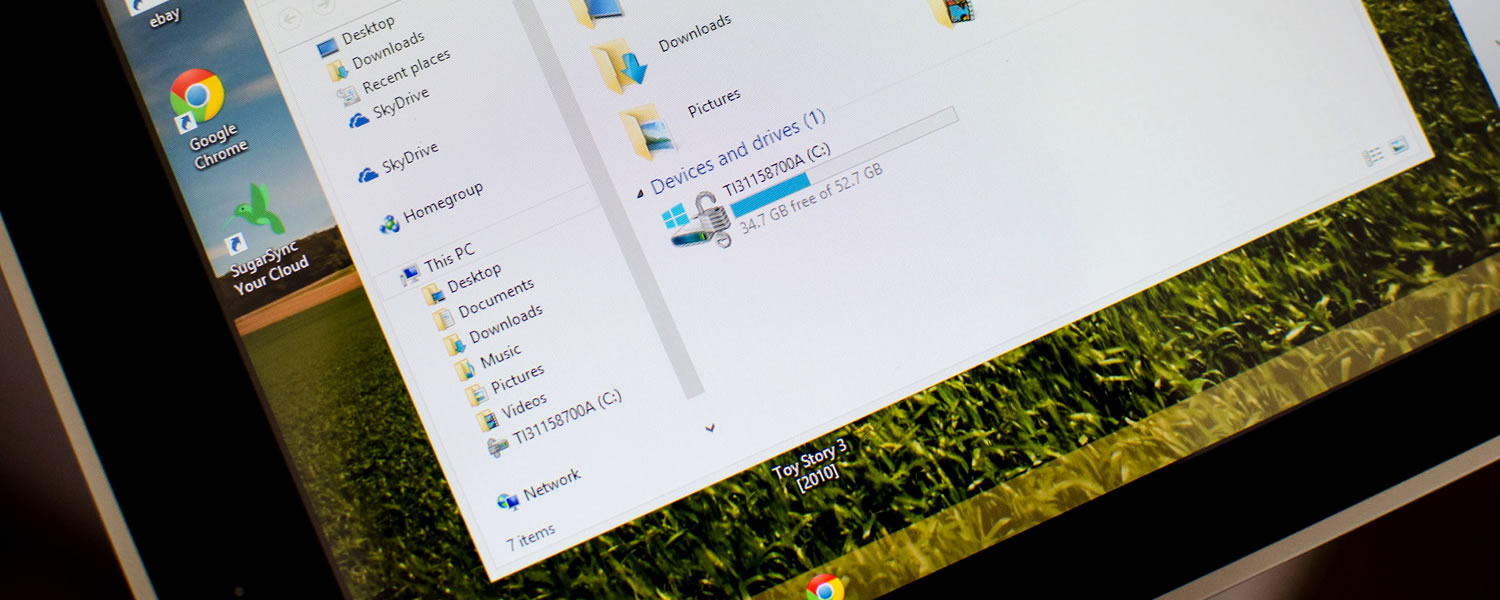Battery Life, Wrap Up
The Toshiba Encore packs a sizable 19.5 watt-hour battery, which should be more than enough to see it through a regular day's worth of usage. Unlike smartphones, the battery life of a tablet is rarely a concern, although it's never a bad thing to see a device strive to last the longest in all conditions.
That said, the Encore's battery life doesn't seem to hold as long as some of the other tablets I've tested recently, despite featuring similar internals. This could be due to the HFFS panel, which is a type of display seldom used on tablets, but other software and hardware choices may also be contributing factors.

Our video playback battery benchmark backs this up. The Lenovo Miix 2 8, which is very similar to the Encore spec-wise manages to last nearly two hours longer.
Closing Thoughts
Toshiba's first foray into the world of 8-inch Windows 8.1 tablets isn't the fantastic product the company was hoping for. The drab, chubby design is particularly uninspired, failing to make an impression up against slimmer and more portable competition. The inclusion of an HFFS display is interesting, although its overall quality falls behind IPS-type panels, not to mention the disappointing resolution.
It's not all bad news for the Encore, though. Like all previous Bay Trail-powered devices, I was once again pleased with the performance from Intel's low-power SoC, which competes well with offerings from ARM.
The Sony-made 8-megapixel rear camera is surprisingly good, although it's of little consequence when you consider a tablet isn't exactly a go-to device for photography. Windows 8.1 is also a great operating system for power tablet users, despite lacking a solid collection of touch oriented apps.
At $279 for the 32 GB model, or $350 for the 64 GB, the Encore faces many competitors that appear to have done a better job differentiating themselves or paid more attention to build quality. For a similar price, the Asus VivoTab Note 8 offers full Wacom stylus support, or for a bit less money the Dell Venue 8 Pro packs similar hardware on a slimmer case. On the Android front, LG sells the G Pad 8.3 with a high-res display and competitive hardware for $325, plus of course there's cheaper options like Amazon's Kindle Fire HD 8.9 for $230 or the 8-inch Samsung Galaxy Tab 3 for $250.
If you value Windows 8.1 support more than anything, you may find these sub-$300 tablet to look like a bargain. Note however that using desktop apps and typical productivity software like Office is somewhat challenging in this form factor (unless you plan to add a keyboard). If that's your primary intention you may be better served by hybrid PC like the Asus Transformer Book we recently tested.
score
Pros: Good performance from Intel's Bay Trail SoC. Surprisingly great camera for a tablet. Windows 8.1 has a strong feature set
Cons: Chubby, uninspiring design. Disappointing display resolution. The Windows desktop is tricky to use on a small screen.

